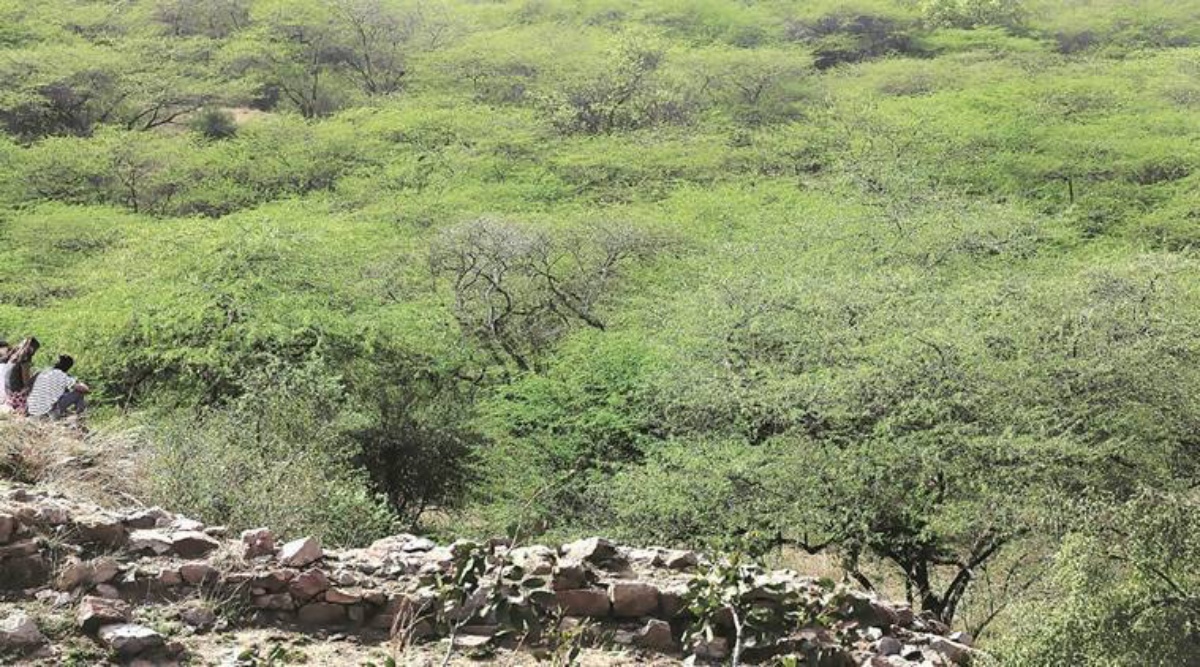CONOCARPUS
1. Context
The Gujarat government has banned the planting of ornamental Conocarpus trees “in forest or non-forest areas”, citing their “adverse impacts on environment and human health”.
Earlier, Telangana too had banned the plant species.

2. Conocarpus Plants
Conocarpus, a fast-growing exotic mangrove species, had been a popular choice for increasing the green cover in Gujarat in recent years
Conocarpus is a genus of flowering trees and shrubs within the family Combretaceae. These plants are commonly known as buttonwood or button mangrove. Conocarpus species are primarily found in tropical and subtropical regions, especially in coastal areas. They are known for their adaptability to saline or brackish water conditions, making them well-suited for coastal and mangrove ecosystems
Key Characteristics:
- Conocarpus species are often found in coastal regions, along estuaries, and in brackish water areas. They are commonly associated with mangrove ecosystems and are considered a mangrove associate rather than a true mangrove species.
- Conocarpus plants produce small, inconspicuous flowers that are often greenish in color. The flowers are arranged in spikes or clusters
- One of the notable features of Conocarpus species is their ability to tolerate saline or brackish water conditions. This salt tolerance is an adaptation that allows them to thrive in coastal and estuarine environments
- While Conocarpus is not considered a true mangrove species, it often grows alongside true mangroves and contributes to the stabilization of coastal areas. Its root systems help prevent erosion along shorelines
3. Conocarpus adverse impacts on the environment and human health
While Conocarpus species have some beneficial characteristics, they can also have adverse impacts on the environment and human health in certain situations.
Here are some of the potential negative effects associated with Conocarpus:
- Conocarpus species can be invasive when introduced to non-native ecosystems. Their ability to adapt to a wide range of environmental conditions and their aggressive growth can allow them to outcompete native plant species. This can lead to a decrease in biodiversity and disrupt the balance of local ecosystems
- In areas where Conocarpus becomes invasive, it can alter the natural hydrology of wetlands and coastal areas. Their dense root systems can reduce water flow, potentially leading to waterlogging and changes in the composition of the plant community
- Conocarpus plants can alter the structure and composition of natural habitats. In coastal areas, they may displace or outcompete native mangrove species, which are critical for providing habitat and protecting shorelines
- In regions with a fire-prone ecosystem, Conocarpus can serve as a potential fire hazard due to its dense growth and woody nature. In case of wildfires, Conocarpus can contribute to the spread of flames
4. Vilayati Kikar
In 2018, the Delhi government agreed to clear the capital’s green lungs, the Central Ridge, of the Vilayati Kikar after years of appeals and court cases by activists.
The Vilayati Kikar ( Prosopis juliflora) is not native to Delhi and was brought to the city in the 1930s by the British.
As the tree grows fast even in arid conditions, it can quickly increase the green cover of an area, and be used as firewood.
However, it also kills off competition. Thus, within a decade, it had taken over the Ridge, killing the native trees like acacia, dhak, kadamb, amaltas, flame-of-the-forest, etc.
Along with the trees disappeared the fauna — birds, butterflies, leopards, porcupines and jackals.
Source: indianexpress




